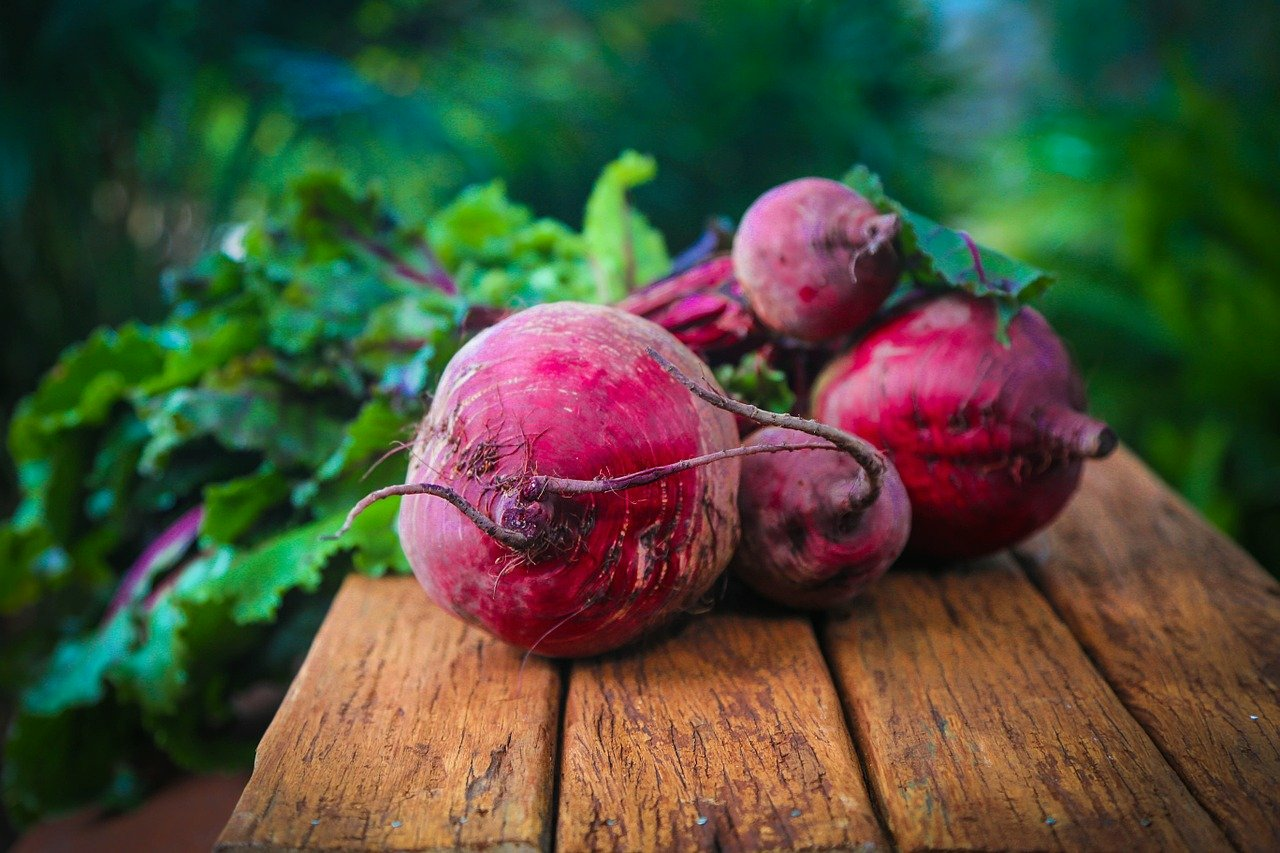
Growing Beetroot: Tips for Sowing, Care & Harvesting
It is versatile and is also one of the healthiest vegetables of all: beetroot. Thanks to its rapid growth and uncomplicated care, it is also suitable for newcomers to hobby gardening. In the kitchen, it enriches your menu until late into the fall. Find out how you can easily grow beetroot yourself in this article.
This Article Contains:
Quick Overview
Growing, Sowing and Harvesting Beetroot:
- Light requirement: sunny to semi-shady
- Nutrient requirements: medium
- Water requirement: high
- Soil: loose, deep and slightly humus-rich
- Germination temperature: 8 - 20 °C/46.4 - 68 °F
- Sowing: Pre-breeding from March, direct sowing in May/June
- Sowing depth: 2 - 3 cm/0.8 - 1.2 in
- Planting distance: 10 cm/3.9 in
- Row spacing : 25 cm/9.8 in
Growing Beetroot - Good to Know
Beetroot (Beta vulgaris) belongs to the goosefoot family (Chenopodiaceae) and is therefore closely related to Spinach and Swiss Chard.
All three are descended from the wild beetroot, but as cultivated plants they have been bred for different characteristics. While the breeding of Swiss chard and spinach is aimed at lush leaf growth, beetroot is intended to form a thick bulb.
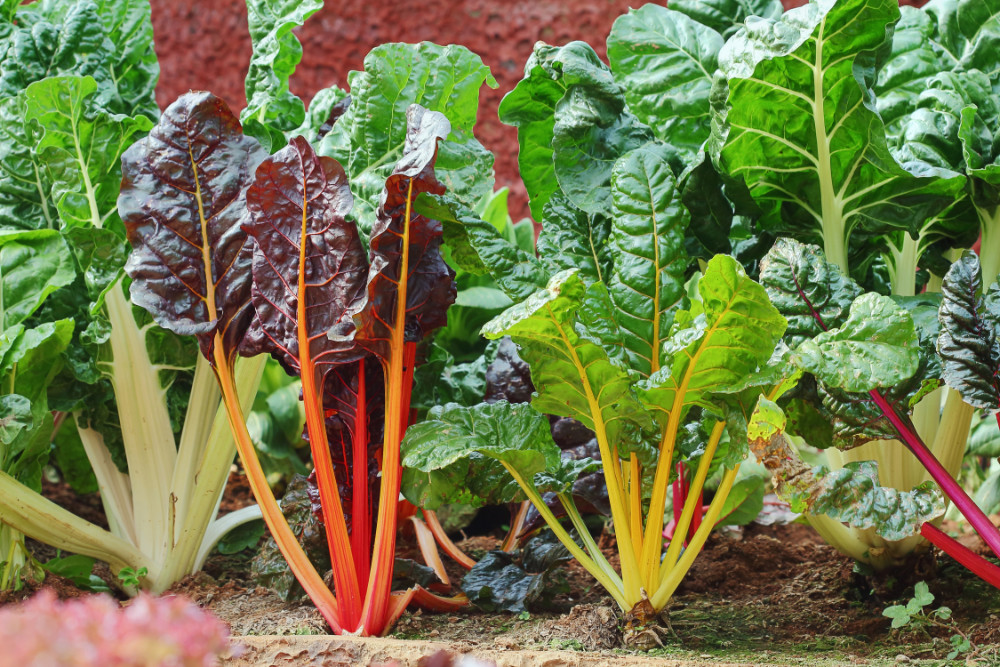
Beetroot is a biennial. In the first year, it forms a rosette of leaves with long stalked leaves and the spherical beetroot. In the second year, the beetroot goes into flower and develops seeds. A stalk up to 1.5 m/1.7 yd long with an inflorescence grows from the beetroot, from which the wrinkled seeds then emerge. In our climates, however, beetroot has to be stored over the winter to produce seeds and then planted out again in spring. It is only hardy in Mediterranean regions.
Beetroot: Healthy Tubers for the Self-Sufficient Garden
Beetroot originally comes from the Mediterranean region, but is now widely cultivated as a popular crop. In its storage organ, the beetroot, the plant concentrates all the important minerals and ingredients. Beetroot is therefore very rich in vitamin B, potassium, folic acid and iron. It is also said to have a blood-forming effect.
In addition to the classic purple-red color, there are also varieties with white, yellow or red and white striped flesh, such as 'Tondo du Chioggia'. Dark varieties generally have a more earthy taste.
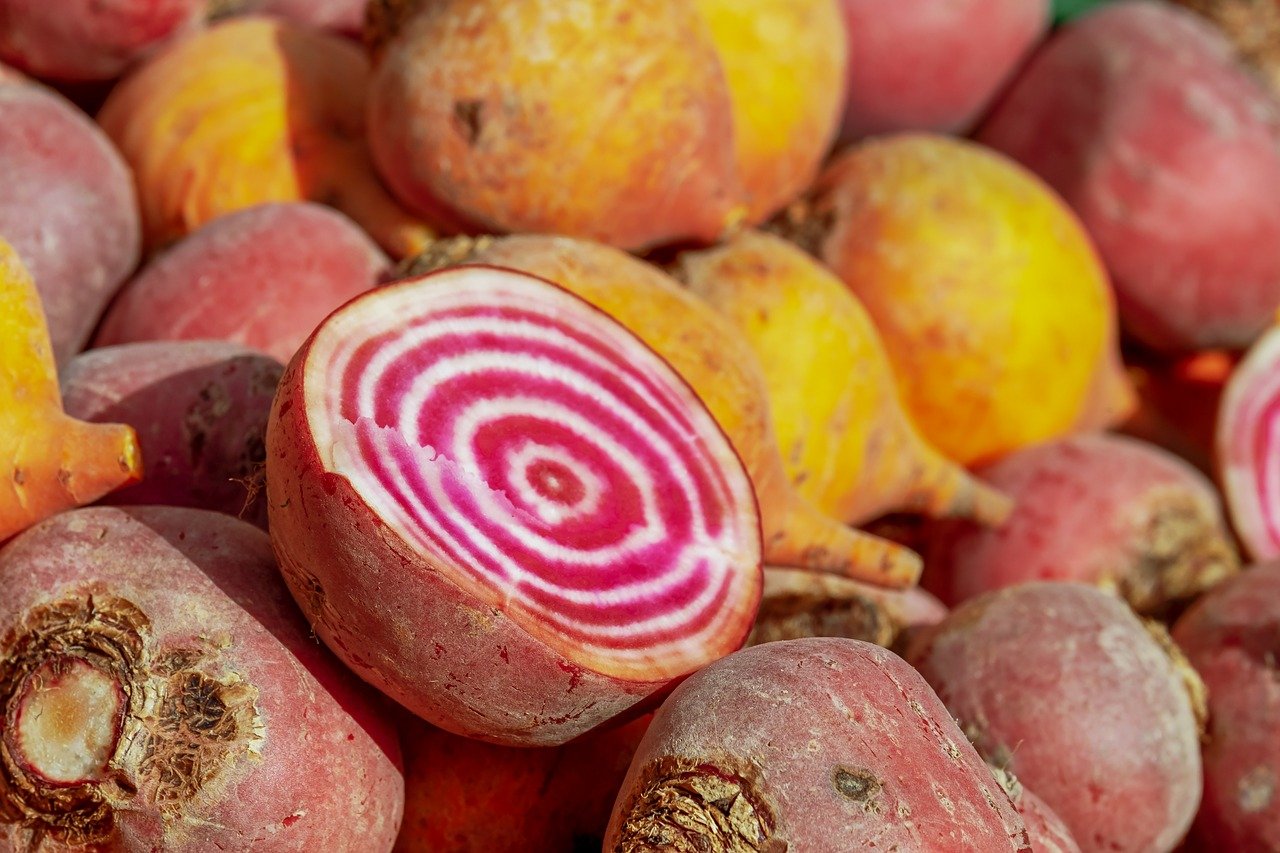
Sowing Beetroot - Propagating or Direct Sowing?
Beetroot grows most vigorously when it is not transplanted, as it has relatively sensitive roots. Transplanting usually weakens the plants a lot and costs some of them their lives. If you do want to transplant them, choose a moist, overcast day. To make your decision a little easier, we have summarized the advantages and disadvantages of Pre-cultivation and Direct Sowing for you here.
Propagating Beetroot
Beetroot is easy to grow. You can start growing them indoors as early as March. The seedlings are then planted in the bed from April. If there is a threat of heavy frost, you should also protect the small plants with fleece. By growing them in advance, you can harvest earlier.
Sow Beetroot Directly
You can sow beetroot directly into the bed from April to June. The germination period is approx. 2 weeks. Direct sowing is very uncomplicated, as the large seeds can be easily dosed. To do this, sow two seeds every 10 cm/3.9 in in a row and only let the stronger plant grow later. This way, you don't have to separate the young plants. Also ensure a row spacing of 25 cm/9.8 in. If you sow too densely, you can gradually pull out individual beetroots and use them. This allows the remaining plants to spread better and form large balls. Late sowing from May to June produces particularly fine beetroots and supplies for the winter.
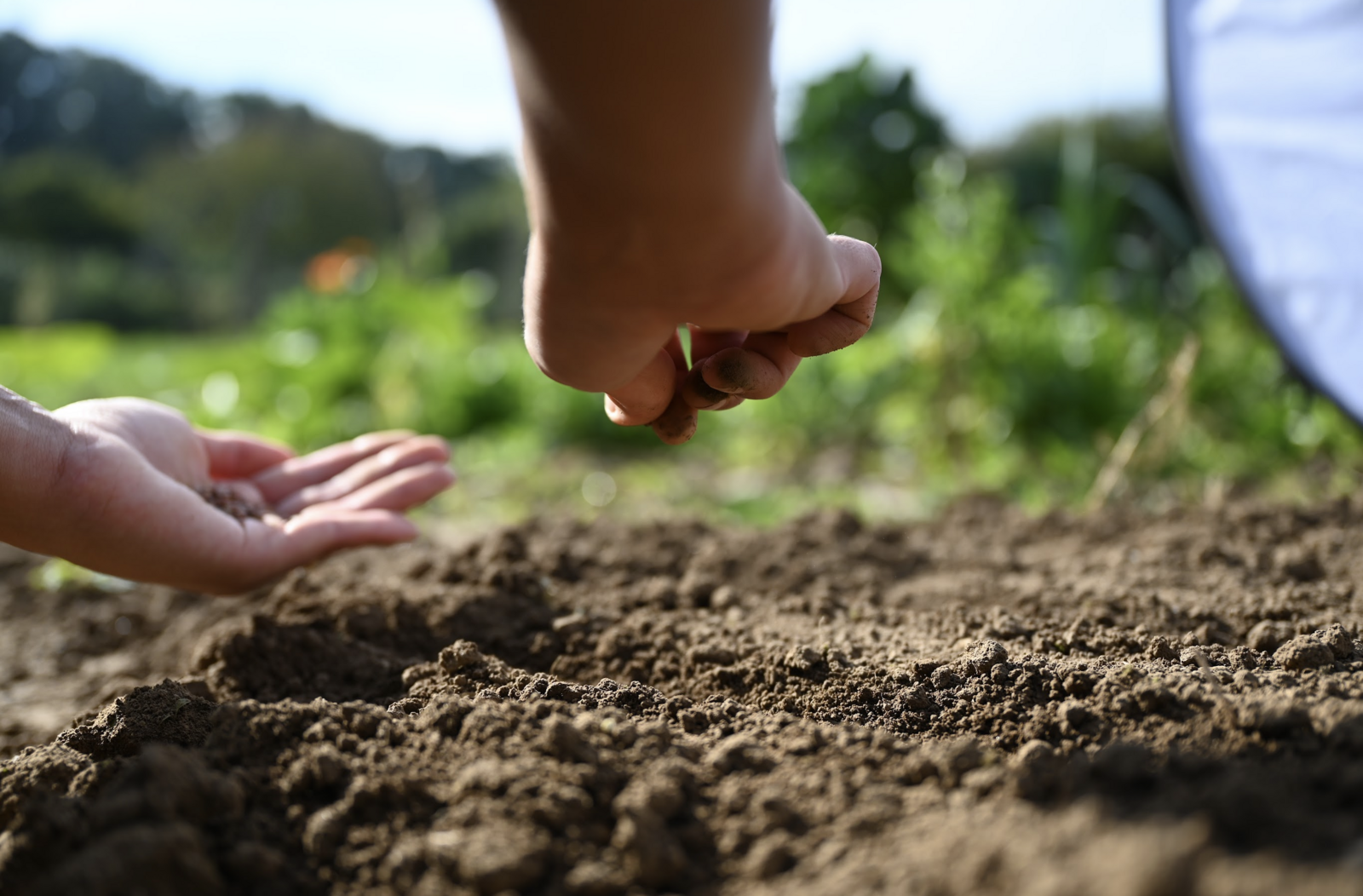

Need More Information About Beetroots?
In our library, you will find information on the individual varieties with cultivation periods, planting and harvesting tips. You will also find good and bad neighbors to help you plan a mixed crop.
Check out Our LibraryPlanting Beetroot in a Mixed Culture
You can find out Companion Plants for Beetroot in a Mixed Culture in our article. Here we give you an overview of companion plants and what you need to consider in crop rotation and succession planting with beetroot!
Fertilizing and Caring for Beetroot
In general, beetroot is relatively undemanding and easy to care for. In the beginning, you should weed every now and then so that the tender young plants are not crowded out by wild herbs. Over time, however, the beetroot forms a lush rosette of leaves that shades the soil and keeps it largely weed-free.
In order to form beautiful large balls, it always needs sufficient moisture. Otherwise it will largely stop growing if there is a lack of water. So make sure that the soil never dries out. Mulching helps to maintain the soil moisture that the beetroots need. However, the soil should be well loosened to prevent waterlogging. Otherwise, waterlogging can cause the roots to "suffocate" and start to rot. This phenomenon occurs particularly in heavy soils.
Fertilize Organically With Compost or Manure
Beetroot is a medium feeder, so additional fertilization is usually not absolutely necessary. If you wish, you can provide the bed with compost and mulch cover in the fall. Alternatively, green manure in the previous fall ensures a good soil structure and sufficient nutrients for the beetroot to grow.
If the soil is very poor in nutrients, it can be fertilized once during the growing season with plant manure. You should not use fertilizer that contains too much nitrogen, as this can lead to excessive nitrate deposits in the beetroot. Beetroot should be fertilized with potassium, which supports healthy root growth. Comfrey Slurry, for example, is very suitable for making a potassium-rich plant slurry.
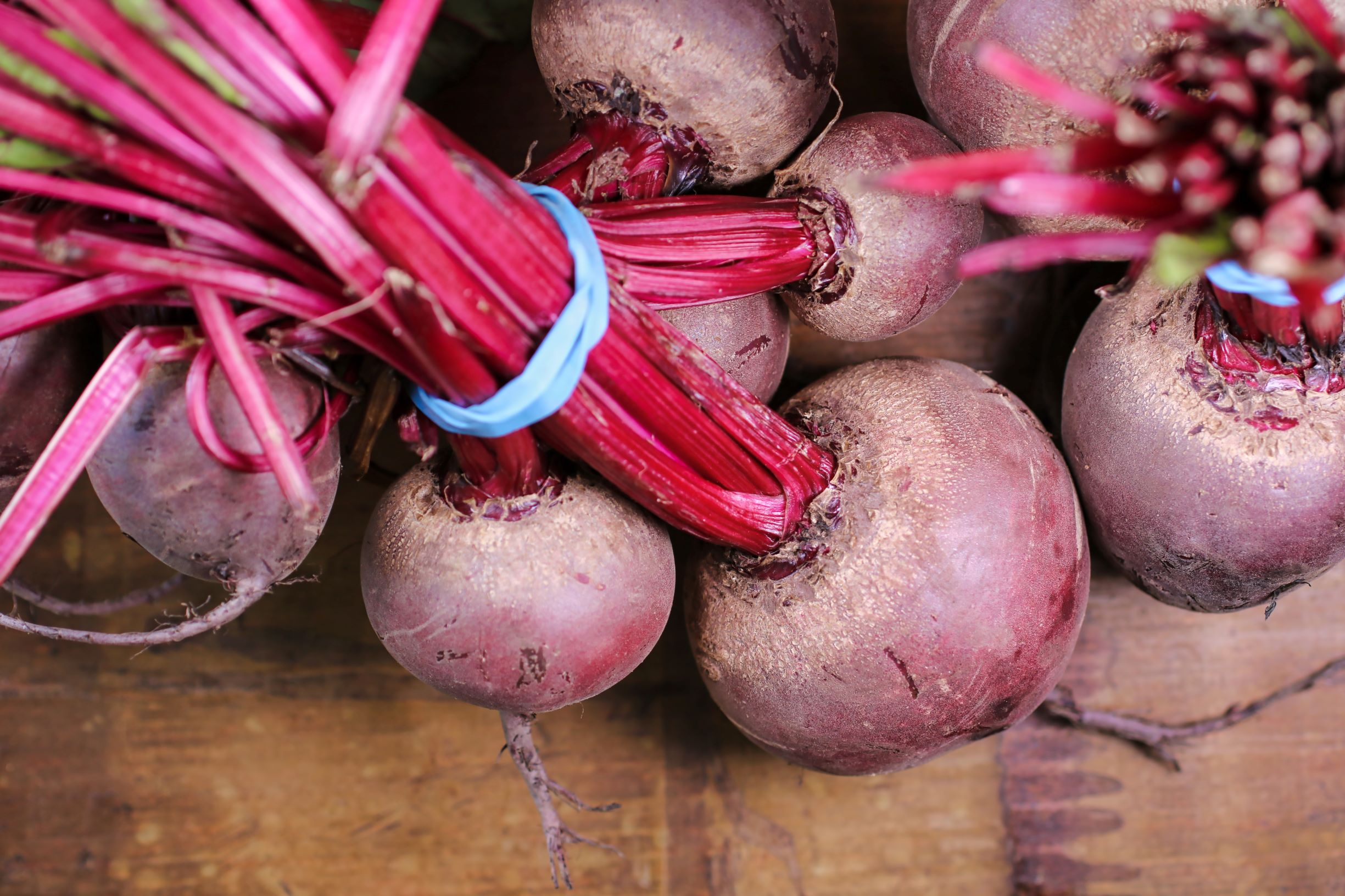
Diseases and Pests of Beetroot
The leaves of the beetroot are usually affected. This often results in plant diseases such as black spot, red spot or angular leaf spot. Beetroot is also frequently attacked by Downy Mildew. However, beetroot is relatively robust. The spots on the leaves are usually harmless and can be tolerated. However, if the discoloration is severe, you should remove the diseased parts of the plant. Spraying Horsetail Tea on several consecutive days can also help. A decoction with garlic or onions also helps with fungal diseases.
A common pest of goosefoot plants is the beetroot fly. From the end of April, as well as in July/August, eggs can be found on the underside of mostly fully developed leaves. After the larvae hatch, their feeding tunnels become visible on the leaves. The burrows can burst open over time. After 2-3 weeks, the larvae pupate in the soil. Spraying with neem oil can help here.
Harvesting & Storing Beetroot
You can read all about Harvesting, Storing and Preserving Beetroot in this article. Here you will find tips on fresh processing of beetroot as well as ways to preserve it.
Beetroot is a real health booster and no vegetable garden should be without it. I hope you now have everything you need to grow them yourself. If you have any questions or comments, please write to us at magazin@fryd.app.
Want to get helpful gardening tips all year round and plan your own beds in the best possible way? Then register here or download the Fryd app for Android or iOS.
Fryd - Your digital bed planner
Annabell
Current Topics in the Community

#red , #tuesday

Liked 1 times
#testpostcount

Dec 2025
Popular Articles

Companion Plants for Carrots: What (Not) to Plant With Carrots

Companion Plants for Celery : What (Not) to Plant With Celery?

Strawberry Types: List of Best Strawberry Varieties

Companion Planting With Strawberries: Companion Plants and Planting Plan

Basil Varieties & Types at a Glance

What to Plant With Cabbage: Good and Bad Companion Plants

Fertilizing Strawberries: Home Remedies & Natural Fertilizers at a Glance

Growing Sweet Potatoes: Tips on Cultivation & Companion Plants

Companion Plants for Kitchen Herbs: Chives, Parsley & Co

What Herbs Can Be Planted Together?
FAQ
Until when can you plant beetroot?
You can sow beetroot directly into the bed from April to June. The germination period is approx. 2 weeks. You can start growing them indoors as early as March. The seedlings are then planted in the bed from April.
How much water does beetroot need?
Beetroot has a high water requirement. In order to form beautiful large balls, it always needs sufficient moisture. Otherwise it will largely stop growing if there is a lack of water. So make sure that the soil never dries out.
How much fertilizer do beetroots need?
Beetroot is a medium feeder, so additional fertilization is usually not absolutely necessary. If you wish, you can provide the bed with compost and mulch cover in the fall. Alternatively, green manure in the previous fall ensures a good soil structure and sufficient nutrients.
Beetroot is a biennial. In the first year, it forms a rosette of leaves with long stalked leaves and the spherical beetroot. In the second year, the beet goes into flower and develops seeds. However, it is only hardy in Mediterranean regions.